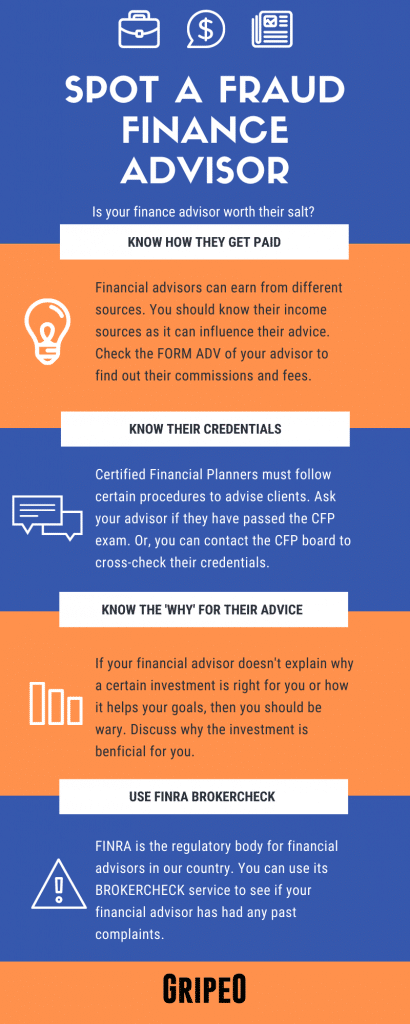Richard Michael Wesselt

Background Of Richard Michael Wesselt (CRD No. 2195569)
In 1992, Wesselt first became registered through a FINRA member firm as an Investment
Company and Variable Contracts Products Representative. In March 1997, a FINRA
member firm discharged Wesselt for “placing a customer’s signature on a document.”
Another FINRA member firm discharged Wesselt in February 2014 for a “[s]uspected
breach of firm policy regarding signatures on blank documents.”
From March 2014 through September 2017, Wesselt was registered as an Investment
Company and Variable Contracts Products Representative through O.N. Equity Sales
Company, Inc. (CRD No. 2936). On September 6, 2017, O.N. Equity filed a Form U5,
terminating Wesselt’s registration. Wesselt is currently associated with another FINRA
member firm.
Activity(s) Reported – Richard Michael Wesselt
A. Unsuitable Recommendations
FINRA’s Suitability Rules
FINRA Rule 2111(a) provides in pertinent part that “[a] member or an associated person
must have a reasonable basis to believe that a recommended transaction or investment
strategy involving a security or securities is suitable for the customer based on the
information obtained through the reasonable diligence of the member or associated
person to ascertain the customer’s investment profile.” A customer’s investment profile
includes, among other things, the customer’s age, other investments, financial situation
and needs, tax status, investment objectives, investment experience, investment time
horizon, liquidity needs, and risk tolerance. FINRA’s Regulatory Notice 12-55 confirmed
that suitability obligations apply to “a registered representative’s recommendation of an
`investment strategy’ involving both a security and non-security investment.”
variable annuity is a complex, long-term investment vehicle that offers tax-deferred
treatment of earnings, annuity payout options that can include guaranteed income
payments, and a death benefit. Because of their cost and complexity, registered
representatives must exercise particular care to ensure that a variable annuity is suitable
for a customer before recommending it. Thus, in addition to the general suitability
requirements imposed under Rule 2111, FINRA Rule 2330(b) specifically requires that,
when recommending variable annuities, representatives have a reasonable basis to
believe that “the particular deferred variable annuity as a whole … and riders and similar
product enhancements, if any, are suitable … for the particular customer ….”
In general, variable annuities have two phases: (1) an accumulation phase, during which
the investor’s premiums are allocated to investment portfolios; and (2) a distribution
phase, during which the insurance company guarantees a minimum payment to the
investor based on the principle and investment returns. A recommendation that a
customer with short-term liquidity needs purchase a variable annuity may be unsuitable
because withdrawals during the accumulation phase can be costly, often resulting in the
imposition of surrender charges, income tax liability, and tax penalties.
Wesselt’s “Infinite Banking” Investment Strategy
From March 2014 through September 2017, Wesselt made unsuitable recommendations
to 78 customers to purchase a variable annuity. These recommendations were
inconsistent with the customers’ investment profiles, including their time horizon,
liquidity needs, and risk tolerance. Despite that variable annuities are intended to be longterm investments, Wesselt knew when he made the recommendations that his customers
would be making short-term withdrawals from their variable annuities. Specifically,
Wesselt recommended that his customers follow an investment strategy that he termed
“building your own bank” or “infinite banking.” Wesselt’s strategy was predicated on
persuading customers to liquidate their retirement accounts, which typically held a
portfolio of mutual funds, to use the proceeds of that liquidation to purchase variable
annuities, and then to liquidate the variable annuities in order to build cash value in whole
life insurance policies.
During the relevant period, Wesselt was one of the top producers for variable annuity
sales at O.N. Equity; in 2016 he was the firm’s highest producer. For the 78 customers
who were harmed by his variable annuity recommendations, and recommendations to
take early withdrawals, Wesselt earned $686,025 in commissions on the sale of the
variable annuities.
Wesselt’s recommended investment strategy generally involved three steps.
First, Wesselt recommended that his customers liquidate their retirement savings, which
they often held in qualified, tax-deferred accounts such as 401(k)s or IRAs. As a result,
these customers lost benefits associated with their 401(k)s, including services such as
access to investment advice, telephone help lines, educational materials and workshops.
Also, assets held in 401(k) plans are typically protected from creditors and legal
judgments, and certain 401(k) plans may allow for penalty free withdrawals.
Next, Wesselt recommended that customers purchase a variable annuity with funds
liquidated from their retirement plans. Wesselt generally recommended that his
customers purchase an X, or bonus, share class variable annuity. These products, which
add a cash bonus to the contract, typically have the longest surrender periods of any
variable annuities offered in the marketplace and charge higher mortality and expense
fees than other share classes. Early withdrawals decrease the amount of the bonus
awarded under the contract. Wesselt also recommended customers invest in a guaranteed
minimum withdrawal benefit rider, which allows lifetime withdrawals of a specified
percentage once the customer reaches a specified age. Both the X-share and the
withdrawal rider increased the customers’ fees for purchasing the variable annuity, and
thus were uniquely unsuited for customers who intended to make short-term withdrawals
from the variable annuity. Wesselt typically had his customers sign blank or incomplete
disclosure documents or had them sign those documents quickly in his presence. As a
result, his customers frequently did not understand the unique features and risks
associated with these variable annuities and riders.
Finally, after the variable annuity was issued, Wesselt recommended customers take early
withdrawals, causing customers to lose benefits associated with the variable annuity and
incur surrender charges. Wesselt’s recommendations that customers make withdrawals
from their variable annuities generally fell into two categories: (1) large one-time
withdrawals to pay life insurance premiums; and (2) large one-time withdrawals to pay
significant expenses, such as the purchase of a home or the settlement of a divorce.
Wesselt’s Recommended Investment Strategy was Unsuitable for 78 Customers
Wesselt’s recommendations to 78 customers that they purchase and then take early
withdrawals from their variable annuities in order to pursue his “infinite banking”
investment strategy, were unsuitable in light of those customers’ investment profiles—
including their investment time horizons, liquidity needs, and risk tolerances—and those
recommendations resulted in substantial customer harm.
For example,
• In September 2014, Customer 1, 43 years old, met with Wesselt to discuss her
financial needs, which included substantial daycare expenses. Wesselt
recommended that she liquidate her 401(k) account, which was worth
approximately $220,000, and use the proceeds to purchase an X-share variable
annuity with a lifetime withdrawal rider. At the same time, Wesselt recommended
that Customer 1 purchase whole life insurance policies for herself and her family,
and pay for the premiums on these policies by making withdrawals from the
variable annuity. Finally, Wesselt recommended that Customer 1 take loans from
her life insurance policies to pay for her family’s daycare expenses. In four years,
Customer 1 withdrew $225,662 from her variable annuity to pay life insurance
premiums and other expenses, which included surrender fees of $11,998 and tax
withholding of $71,564. The early withdrawals also caused Customer 1 to incur a
tax penalty. She is no longer able to afford her life insurance premiums, and her
variable annuity, which held most of her retirement savings, is now worth less
than $10,000.
• Customer 2, who was 33 years old at the time, met with Wesselt in December
2014 to discuss financial planning after taking a new job. Wesselt recommended
that he purchase a whole life insurance policy and use his 401(k), which was
worth approximately $40,000, to purchase an X-share variable annuity with a
lifetime withdrawal rider. Tlu•ee days after the variable annuity was issued,
Wesselt recommended that this customer take a withdrawal from this variable
annuity to pay life insurance premiums. Wesselt later recommended that he
withdraw funds from his variable annuity to pay for repairs on his home. In
November 2015, Wesselt recommended another withdrawal to pay for the next
year’s life insurance premiums. In less than a year, Customer 2’s variable annuity
declined from $39,693 to $13,601, he incurred $1,814 in surrender charges, he
paid $7,286 in tax withholding, and was assessed a tax penalty for early
withdrawal of retirement funds.
• Customer 3 met with Wesselt in October 2014, when she was 59 years old and
nearing retirement, and sought Wesselt’s advice regarding the purchase of an
apartment and assisting a child with student loan repayment. Wesselt
recommended that she purchase a variable annuity, using approximately $58,000
that she held in a 401(k). In June 2015, Wesselt recommended Customer 3
purchase a whole life insurance policy and make annual withdrawals from her
variable annuity to make premium payments on that policy. Each annual
withdrawal from her variable annuity was $16,840, which included $12,000 for
premiums, $840 in surrender charges, and tax withholding of $4,000. The
withdrawals could only be sustained for three years, as each withdrawal depleted
the contract value of Customer 3’s variable annuity. By June 2017, the variable
annuity had declined from its original value of $57,955 to $8,489.
• Customer 4, who was 52 years old, met with Wesselt in the spring of 2016 to
discuss finances and an impending divorce. She needed to pay $40,000 as part of
a divorce settlement, and the only available funds to do so were in the customer’s
401(k). Customer 4 also wanted to help her child pay off student loans. Though
Wesselt was aware of Customer 4’s immediate need for these funds, he
nonetheless recommended that she roll her 401(k) into an X-share VA with a
lifetime withdrawal rider. The initial contract value was $133,144. Within three
days of its issuance, Wesselt recommended that she withdraw $63,697, which
included $40,000 for the divorce settlement. A week later, Wesselt recommended
that she withdraw $55,323 from the variable annuity in order to pay $33,000 in
premiums for a new whole life policy that Wesselt sold her. In just one week,
Customer 4’s variable annuity declined by 85% to $19,764, and she paid $8,180
in surrender charges. In addition to funds withheld for taxes, Customer 4 was also
assessed a tax penalty for taking the early withdrawals.
• Customer 5, a 49-year-old single parent of a child with special needs, met Wesselt
in December 2014. Wesselt knew that Customer 5 had limited means, did not
have a steady income, and needed liquidity because of her significant, recurring
living expenses. Wesselt recommended that Customer 5 roll her 401(k) into an Xshare variable annuity with a lifetime withdrawal rider. This policy was issued on
January 20, 2015 with a value of $196,827. At the same time, Wesselt also
recommended that Customer 5 make withdrawals from the variable annuity in
order to pay premiums on whole life insurance policies that he sold to her. Two
months later, Customer 5 began making withdrawals from her variable annuity to
pay for her living expenses. Over the next two years, Customer 5 made a series of
withdrawals that ultimately resulted in the complete liquidation of her variable
annuity. She paid $16,044 in surrender charges and $37,426 in tax withholding.
Customer 5 also was subject to a tax penalty for taking early withdrawals from
her retirement account.
In total, Wesselt made unsuitable recommendations that 78 customers purchase and then
liquidate variable annuities. These unsuitable recommendations caused the customers to
incur surrender charges of $378,452. These 78 customers were subjected to costly fees
and penalties, forfeiture of expected benefits, lapsed or cancelled policies, and the
depletion or complete loss of their retirement savings. Wesselt, by contrast, earned
commissions of $686,025 from the sale of these variable annuities.
Wesselt’s unsuitable recommendations to 78 customers violated FINRA Rules 2111,
2330(b) and 2010.
B. Wesselt’s Improper Signature Practices
FINRA Rule 2010 provides that a “member, in the conduct of its business, shall observe high
standards of commercial honor and just and equitable principles of trade.” Causing customers
to sign incomplete or blank forms or using photocopied or recycled customer signatures
violates FINRA Rule 2010.
FINRA Rule 4511 requires each member firm to make and preserve books and records in
conformity with applicable FINRA rules and Exchange Act Rules 17a-3 and 17a-4.
Exchange Act Rule 17a-4(b)(4) requires firms to preserve records relating to
communications concerning the firm’s business. A registered representative who enters
inaccurate information into a firm’s books and records violates FINRA Rules 4511 and
2010.
O.N. Equity’s written supervisory procedures expressly prohibited its registered
representatives from having customers sign blank or partially completed documents.
Wesselt was aware of these procedures and he signed annual compliance certifications on
three occasions, attesting that he understood the firm’s procedures. Wesselt had also
previously been terminated from his prior employer for allowing a customer to sign a
blank form.
Nonetheless, during his tenure at O.N. Equity, employees in Wesselt’s office engaged in
a practice of obtaining customer signatures on blank or incomplete forms at Wesselt’s
direction. The forms included, among others, new account agreements and variable
annuity withdrawal request forms. Wesselt directed his staff to send or provide partial documents or forms, or signature pages, to customers with instructions to sign and return
the document. The forms were then completed by Wesselt or his staff and submitted to
O.N. Equity or the variable annuity company for processing. As a result of this practice,
many of Wesselt’s customers did not have the opportunity to read important disclosures
regarding their variable annuities, and thus were unaware of the features, costs, and risks
associated with these products. Similarly, blank variable annuity withdrawal forms
provided no information about the amount of the withdrawal, the withholding of taxes, or
surrender fees.
By directing his employees to have customers sign blank or incomplete forms, Wesselt
caused O.N. Equity to create and maintain inaccurate books and records in violation of
Rules 17a-3 and 17a-4 of the Exchange Act.
By virtue of the foregoing, Wesselt violated FINRA Rules 2010 and 4511.
Can you expose the broker trying to trick you?
FINRA offers the free web tool BrokerCheck, which allows users to check a broker’s credentials, registration, and employment history. The disclosure part of BrokerCheck includes information on client conflicts, disciplinary proceedings, and specific financial and legal issues on the broker’s record.
Penalties And Sanctions
A bar from association with any FINRA member in all capacities.
Respondent understands that if he is barred or suspended from associating with any
FINRA member, he becomes subject to a statutory disqualification as that term is defined
in Article III, Section 4 of FINRA’s By-Laws, incorporating Section 3(a)(39) of the
Securities Exchange Act of 1934. Accordingly, he may not be associated with any
FINRA member in any capacity, including clerical or ministerial functions, during the
period of the bar or suspension. See FINRA Rules 8310 and 8311.
Similar post: JP Markets
The sanctions imposed herein shall be effective on a date set by FINRA staff. A bar or
expulsion shall become effective upon approval or acceptance of this AWC.
Recent Activity(s)Of The Individual/Firm
From March 2014 through September 2017, Wesselt promoted investment strategies
involving the purchase of variable annuities and whole life insurance policies. An integral
component of Wesselt’s strategies was his recommendation that customers first liquidate
their retirement savings in order to purchase variable annuities. Then, almost immediately
after purchasing these annuities, Wesselt often recommended that customers make
substantial and costly withdrawals from the annuities in order to purchase from Wesselt
whole life insurance policies. Wesselt told these customers, many of whom were
incurring large or unexpected expenses, that they could use the cash value in their whole
life insurance policies to make loans to themselves. Wesselt’s recommendations to 78
customers that they purchase variable annuities as part of this investment strategy were
unsuitable, and resulted in significant harm to these customers, including unnecessary
surrender charges, costly fees and penalties, forfeiture of expected benefits, and the
depletion or complete loss of their retirement savings.
Wesselt’s recommendation of this unsuitable investment strategy to 78 customers
violated FINRA Rules 2111, 2330(b) and 2010.
In connection with his unsuitable recommendations, Wesselt had customers sign
incomplete or blank pages of various documents, including new account documents,
variable annuity disclosure forms, and documents authorizing the withdrawal of funds
from variable annuities, in violation of FINRA Rule 2010; this conduct also caused his
firm to have inaccurate books and records in violation of FINRA Rules 4511 and 2010.
How To Spot A Fraud Finance Advisor (Infographic)

Help For Victims Of Richard Michael Wesselt
If you have lost funds because of misrepresentation, unsuitable investment, or unsuitable investment strategy from Richard Michael Wesselt. Then you can take legal action and get justice. Fraud, Malpractice & dereliction of duty should not be taken lightly, especially in this industry. We highly suggest that you notify authorities or seek legal action if your financial advisor or brokerage firm fails to abide by FINRA’s rules are regulations.
Financial advisors are regulatory & legally obligated to suggest (recommend) the most suitable investments/investment strategies to their clients. Their suggestions should have their client’s best interests and should be appropriate for their client’s goals and needs. Similarly, the brokerage firm which hires financial advisors also has a regulatory & legal obligation to keep a close watch and supervise their Financial Advisors’ practices & behavior. They need to make sure that the financial advisor is not being manipulative or having an unreasonable bias towards certain investments. If the financial advisor and/or the brokerage firm breaches these duties, then the client/customer may be entitled to a full or partial recovery of their losses.
Financial advisors need to have the interest of their clients when giving suggestions related to investments and investment strategies. Reasonable basis suitability requires the advisor to do their best to analyze & identify the risks and rewards associated with their suggested investment and/or investment strategy.








–